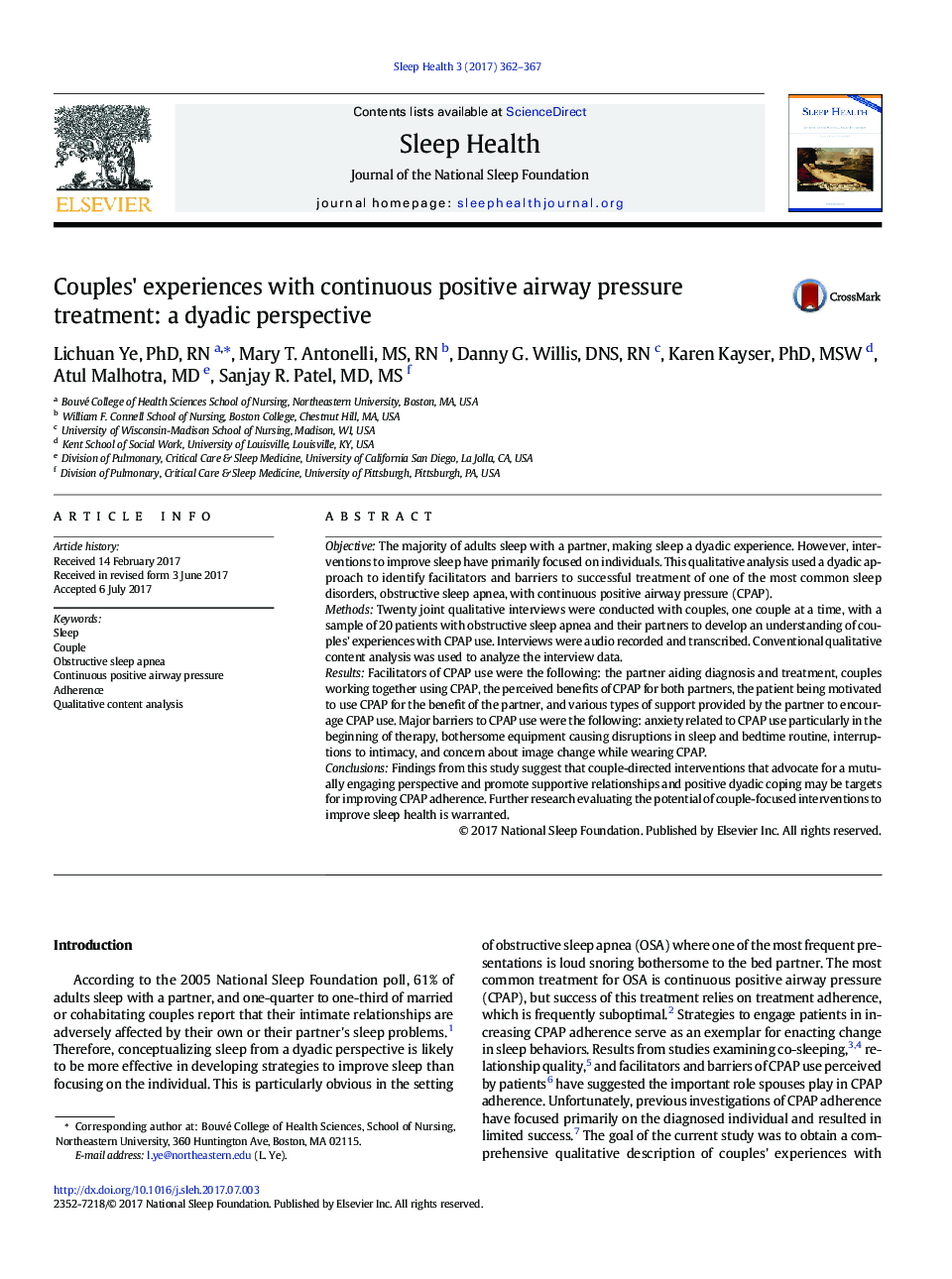| Article ID | Journal | Published Year | Pages | File Type |
|---|---|---|---|---|
| 5039492 | Sleep Health | 2017 | 6 Pages |
ObjectiveThe majority of adults sleep with a partner, making sleep a dyadic experience. However, interventions to improve sleep have primarily focused on individuals. This qualitative analysis used a dyadic approach to identify facilitators and barriers to successful treatment of one of the most common sleep disorders, obstructive sleep apnea, with continuous positive airway pressure (CPAP).MethodsTwenty joint qualitative interviews were conducted with couples, one couple at a time, with a sample of 20 patients with obstructive sleep apnea and their partners to develop an understanding of couples' experiences with CPAP use. Interviews were audio recorded and transcribed. Conventional qualitative content analysis was used to analyze the interview data.ResultsFacilitators of CPAP use were the following: the partner aiding diagnosis and treatment, couples working together using CPAP, the perceived benefits of CPAP for both partners, the patient being motivated to use CPAP for the benefit of the partner, and various types of support provided by the partner to encourage CPAP use. Major barriers to CPAP use were the following: anxiety related to CPAP use particularly in the beginning of therapy, bothersome equipment causing disruptions in sleep and bedtime routine, interruptions to intimacy, and concern about image change while wearing CPAP.ConclusionsFindings from this study suggest that couple-directed interventions that advocate for a mutually engaging perspective and promote supportive relationships and positive dyadic coping may be targets for improving CPAP adherence. Further research evaluating the potential of couple-focused interventions to improve sleep health is warranted.
